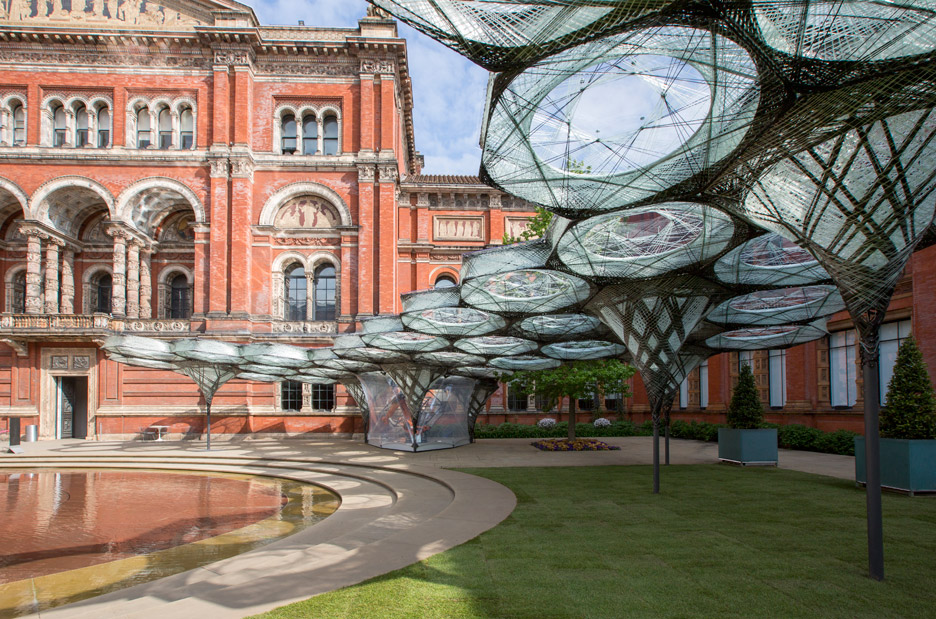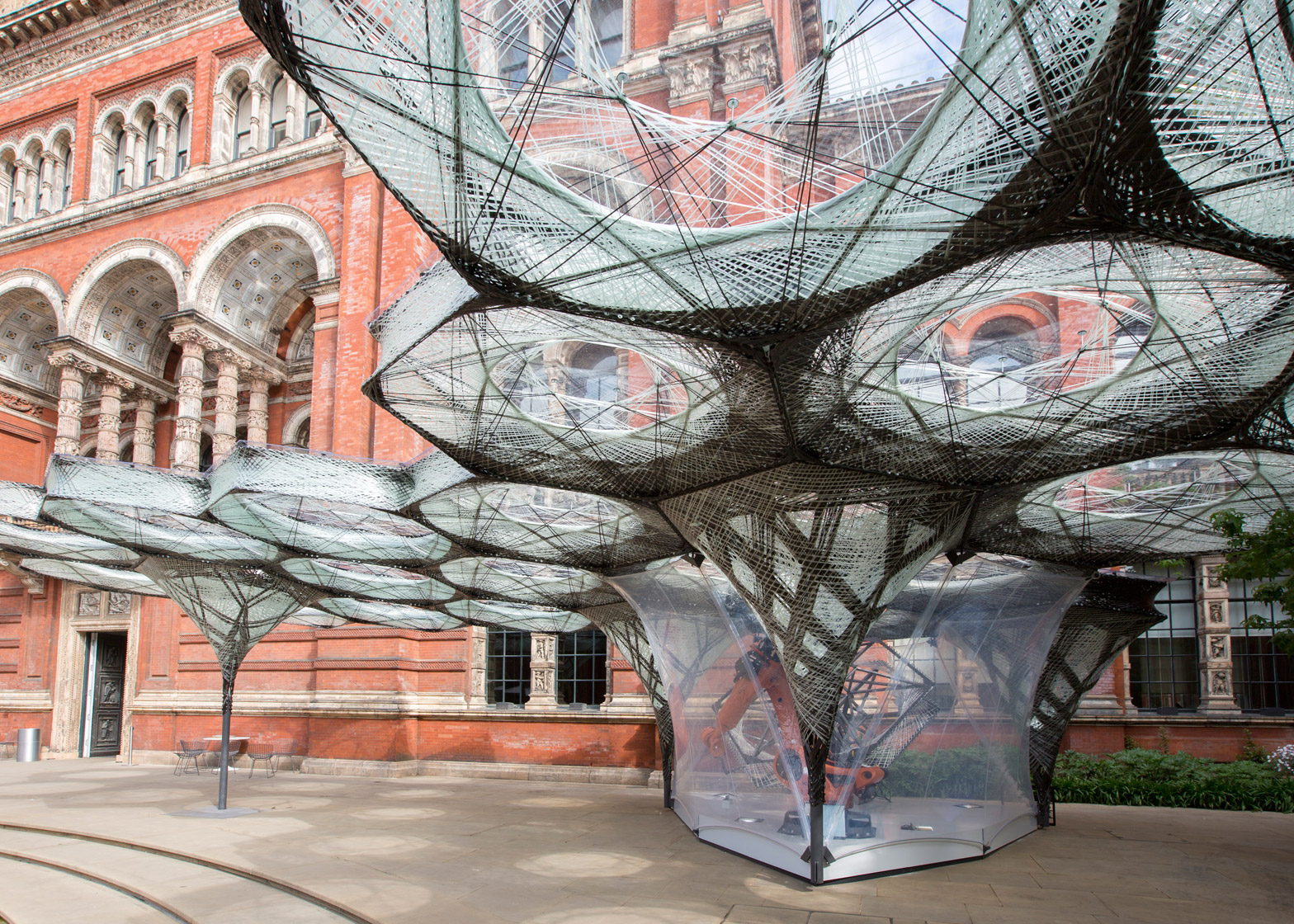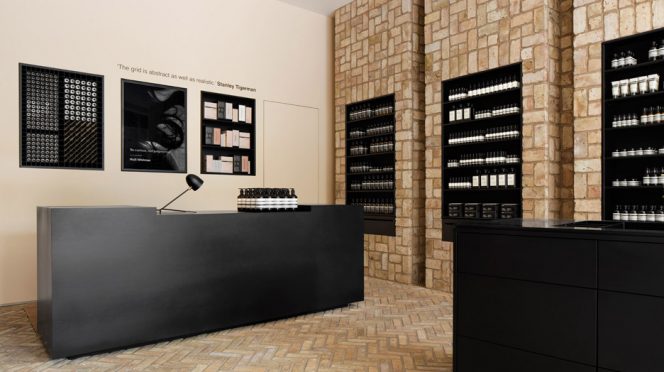A robotically woven carbon-fibre pavilion developed by a team from the University of Stuttgart has been erected in the courtyard of London’s V&A museum as part of a season of engineering events.
The Elytra Filament Pavilion comprises 40 unique hexagonal components that have been robotically fabricated from a combination of transparent glass fibre and black carbon fibre.
The web-like design of each component is based on the fibrous structure of beetle’s forewings – named elytra.
The pavilion is designed and produced by architect and researcher Achim Menges, in collaboration with architect Moritz Dörstelmann, structural engineer Jan Knippers and climate engineer Thomas Auer.
It forms part of an ongoing research project looking at biomimicry in design by the University of Stuttgart’s Institute of Computational Design – directed by Menges – and the Institute of Building Structures and Structural Design – led by Knippers.
“This is a live research project,” said Achim Menges at the opening of the pavilion today. “One of the most exciting materials we’ve found are fibre-reinforced plastics – it’s also interesting to see that nature also uses fibrous composites.”
“This is very much a showcase of how design and engineering come together,” he added, claiming that developments in digital design and robotic construction are transforming the field of engineering.
“I think we’re experiencing another paradigm shift, a fourth industrial revolution.”
Each piece of the 200-square-metre structure, which is supported by funnel-shaped legs, is formed by a single length of resin-coated fibre and weighs just 45 kilograms.
The glass and carbon fibre is wound around metal formwork by a robotic arm, before being cured to form the rigid hexagonal elements.
An on-site robotic contained within a transparent membrane will produce new elements of the pavilion throughout the show, which will run until 6 November 2016.



















